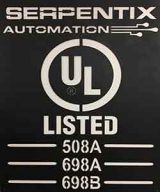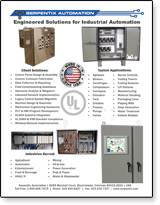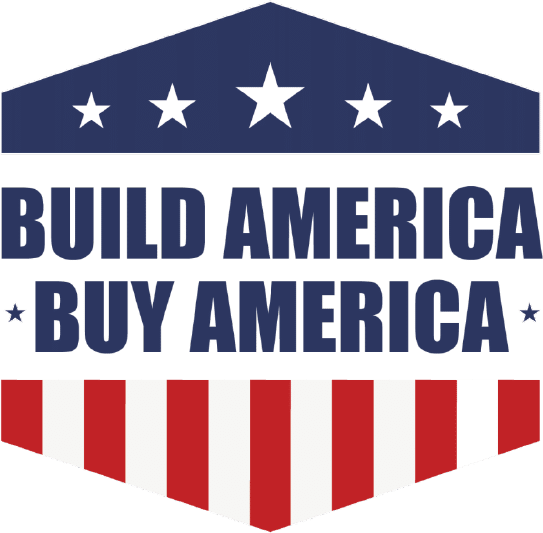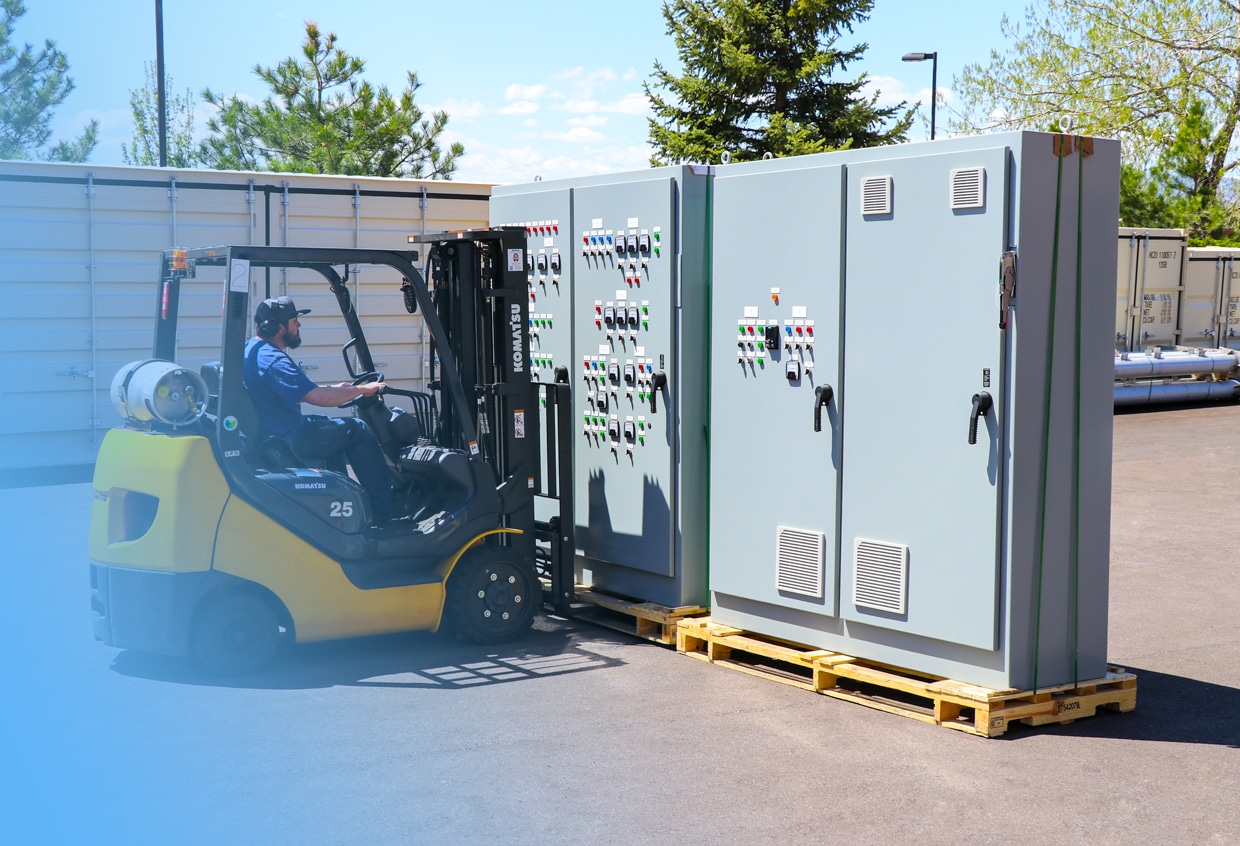
High Quality Custom Control Panels
Serpentix Automation provides state of the art, customizable control panels that function for a wide range of process-related equipment. 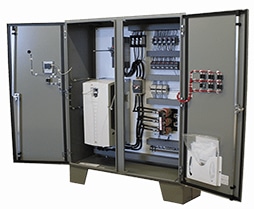
For companies that provide equipment requiring control panels but lack the capability to produce them, we help to bridge the gap. This allows companies to focus on their primary service with the assurance that their clients will receive a quality control panel and a complete equipment package.
Typical Applications:
- Agitators
- Batch Plants
- Blowers
- Burner Controls
- Centrifuges
- Compressors
- Conveyors
- Cooling Towers
- Extruders
- Fans
- Fueling Systems
- Grinders
- Lift Stations
- Material Handling
- Packaging Lines
- Presses
- Pulping Mills
- Pumps
- Renewable Energy
- Valves
- Vehicle Washes
- Water Treatment
PERSONAL TOUCH
HIGH QUALITY CONTROL PANELS
WHO WE ARE
Serpentix Automation provides high-quality custom control panels by experienced engineering team and highly skilled craftsmen. Our engineers have an outstanding knowledge of the industrial controls market and will design a custom solution that will meet your expectations.
We strive to meet our customers’ needs while providing the highest quality control panels to our clients in the most cost-efficient manner. First-time customers become loyal long-term clients because we offer quality and service they can’t find anywhere else.
As a locally owned and operated business, we provide the personal touch and exceptional customer service of a smaller company, with the resources, expertise, and certifications of a large corporation.
OUR SERVICES
In areas where hazardous conditions exist, control panels must withstand a number of different environmental variables, while still remaining completely effective.
Serpentix Automation partners with companies to provide such a panel.
Since electrical motors are unable to control themselves, a motor control panel is needed to bridge the gap between man and machine, allowing for total control over the operation of an electrical motor.
PLCs are digital computers used to automate electromechanical processes, but unlike traditional computers, PLCs can handle multiple input and output arrangements, extreme temperatures, vibration and even electrical noise.
VFDs are a type of adjustable speed drive used to control AC motor speed and torque by modifying motor input voltage and frequency.
They are found in everything from appliances to large-scale equipment.
Typical Examples
- Hazardous Location Control Panels
- Motor Control Panels
- Programmable Logic Control (PLC) panels
- Variable Frequency Drives (VFD) Panels
In areas where hazardous conditions exist, control panels must withstand a number of different environmental variables, while still remaining completely effective.
Serpentix Automation partners with companies to provide such a panel.
Since electrical motors are unable to control themselves, a motor control panel is needed to bridge the gap between man and machine, allowing for total control over the operation of an electrical motor.
PLCs are digital computers used to automate electromechanical processes, but unlike traditional computers, PLCs can handle multiple input and output arrangements, extreme temperatures, vibration and even electrical noise.
VFDs are a type of adjustable speed drive used to control AC motor speed and torque by modifying motor input voltage and frequency.
They are found in everything from appliances to large-scale equipment.
Automation FAQ
What defines a hazardous
Hazardous areas are areas that include potentially explosive vapors and/or dust are defined as hazardous. Due to the normal arching that occurs in electrical switching circuits, explosive vapors and dust present the possibility of igniting and exploding if they make their way into an electrical control panel.
The classification system used to describe hazardous areas includes three elements:
- Class: The general class or type of explosive substance in the area.
- Class 1 indicates explosive vapors are present.
- Class 2 indicates explosive dust is present.
- Division: What the degree of exposure is to the explosive substances in the area.
- Division 1 indicates the area is constantly exposed to explosive substances.
- Division 2 indicates the area is only exposed to explosive substances in the event of an accident or leak.
- Group: What the specific explosive substance(s) is/are in the area.
What do NEMA and NEC Mean?
NEMA stands for, The National Electrical Manufacturers Association, and is a collection of electrical equipment manufacturing standards.
NEC or, The National Electrical Code, was developed by the National Fire Protection Association (NFPA) for describing safe electrical equipment and safe electrical installation methods. This collection of standards is the most commonly used by states, municipalities and cities that have the authority to reject an electrical installation, if the installation doesn’t meet NEC standards.
What do various NEMA enclosure ratings mean?
NEMA 1 Enclosure: Although NEMA 1 enclosures are the most simple type of electrical enclosure, not often are they used for electrical control panels due to the more flexible enclosure types available. Typically these enclosures are designed for indoor use or to protect against external objects such as falling dirt.
NEMA 4 Enclosure: These enclosures are the most popular type of electrical control panel enclosures. NEMA 4 enclosures are designed for both indoor and outdoor use and protect against water (including precipitation and hose directed water) in addition to external objects. They also prevent damage due to the formation of ice on the enclosure.
NEMA 4X Enclosure: Offers the same protection and usage capabilities as a NEMA 4 enclosure and additionally, protects the enclosure from corrosion as it is constructed with corrosion resistant materials such as Fiberglass Reinforced Polyester (FRP) or Stainless Steel.
NEMA 7/9 Enclosure: The most expensive and heavy electrical panel enclosure available. They are designed specifically for use in known hazardous areas and protect against internal explosions that would therein cause the enclosure to explode as well.
What does UL stand for and why provide a UL508 listed control panel?
UL stands for Underwriters Laboratories. This third party testing company publishes safety standards as well as third party safety certification for various products. The UL508 is a certification program and safety standard created by UL specifically for companies seeking to build control panels.
Providing a UL 508A Listed Control Panel will greatly increase likelihood that a Building Inspector or “the authority having jurisdiction” will “Accept” your equipment installation as safe.
Building Inspectors are required to have detailed knowledge of all current construction methods. Because it’s impossible for the Building Inspector to know everything, they can collect documented proof of your adherence to an approved third party safety standard to “Accept” your new equipment installation as safe. A UL508A label on your control panel can be used as documented proof of your adherence to an approved third party safety standard.
What do single-phase, dual-phase, and three-phase power mean?
Single-Phase power refers to two wire AC (Alternating Current) power circuits, typically with one power conductor and one neutral conductor. In the US, 120VAC is the standard single phase voltage with one 120V power conductor and one neutral conductor.
Dual-Phase power is also Single Phase due to its two wire AC circuit. This is the standard household power arrangement in the US with two power conductors (120V, 120V) out of phase with one another and one neutral conductor. This arrangement provides (2) 120V single phase power circuits and / or (1) 240V dual phase power circuit.
Three-Phase power refers to three wire AC (Alternating Current) power circuits. These typically use three power conductors out of phase with one another and one neutral conductor – an arrangement that provides (3) 120V single phase power circuits and / or (1) 208V three phase power circuit.
What are control components?
A control component is any device that controls a device. These may include:
Control Relay (CR):
Control relays are the most basic or simple electrical control devices and are used to turn other devices on or off. Control relays use a metal coil that can be energized and de-energized by an electrical voltage for the purpose of opening and closing contact terminals to direct the flow of electricity.
Typically, control relays have anywhere from 1 to 4 contacts, each with 3 connections: Common, Normally Open and Normally Closed. ‘Common’ means that the contact does not change state. Normally open and normally closed refers to the state of the contact when the coil is de-energized. Once the coil is energized, normally open contacts will close and normally open contacts will open.
Time Delay (TD):
Control relays with the ability to control when their contacts change state are called time delay relays. TR relays maintain the same components and functionality of normal control relays, but are used to turn on and off devices at specific times.
‘On’ and ‘Off’ time delay relays refer to the state of the contact before and after the coil is energized. An ‘On’ time delay relay will change to the energized state after the coil becomes energized while an ‘Off’ time delay relay will change to the de-energized state after the coil becomes energized.
‘Interval time delay’ relays have contacts that don’t de-energize until after a certain period of time regardless of when the coil becomes de-energized.
Repeat Cycle Timer (RCT) refers to a type of control relay with two timers built into it. The first timer controls how long the contacts remain in the energized state while the second controls how long contacts remain in the de-energized state.
MAJOR INDUSTRIES WE SERVE
Serpentix Certifications
508A – Industrial Control Panels (UL 508A, File # E364345.) (UL labels/stickers purchased through UL.)
698A/NRBX – Industrial control panels with intrinsically safe circuit extensions to Class I Groups A, B, C and D, Class II, Groups E, F,
and G and Class III hazardous locations. (UL698A NRBX, File # E364760). (UL labels/stickers purchased through UL.)
NNNY – Industrial control panels located in Class I Division 1 Explosion-Proof and Purged/Pressurized Type X
and Division 2 Purged/Pressurized Type Z and Nonincendive hazardous locations (NNNY, File # E364758). (UL Nameplate made in-house with approved nameplate.)
